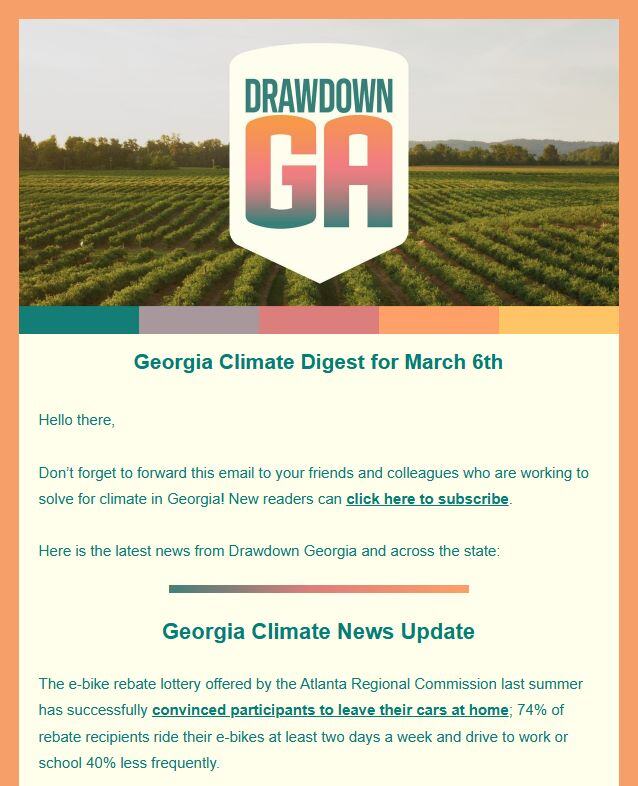The Benefits of Refrigerant Management
Hydrofluorocarbons (HFCs) are chemicals used to cool refrigerators and air conditioners. They are also an extremely potent greenhouse gas. Controlling leakages and replacing HFCs with alternative refrigerants - along with proper disposal and/or recycling of existing HFCs - can lower greenhouse gas emissions.
Market Readiness And Available Technology
Common natural/hydrocarbon refrigerants with lower greenhouse gas emissions potential that can be substituted for HFCs include ammonia, pentane, carbon dioxide, propane, and butane. At present, these lower-emission options already comprise more than 50% of the total refrigerant market.
Companies in the U.S. are at the forefront of intellectual property and production of advanced fluorocarbon refrigerants (hydrofluoroolefins or HFOs) that can limit negative environmental impacts. Heatcraft Refrigeration Products in Georgia has manufacturing facilities in Stone Mountain and Tifton and is part of the North American Sustainable Refrigeration Council, a non-profit aimed to advance natural refrigerants.
Refrigerant Management as a Climate Solution in Georgia
The Drawdown Georgia research team estimates that our state could reduce emissions by one megaton (Mt) of CO2e by retrofitting refrigeration systems in all Georgia grocery stores so that the refrigerant leakage rate is no higher than 8%.
What is the Carbon Emissions Reduction Potential by 2030?
Achievable reduction potential is derived by taking the technical reduction potential, outlined below, and developing a more realistic forecast that takes current rates of deployment, market constraints, and other barriers into consideration.
For refrigerant management, the Drawdown Georgia research team has calculated the achievable reduction potential to be 0.19 Mt of CO2e.
What Is the Upper Limit of Carbon Emissions Reduction Potential?
Technical reduction potential reflects the upper limit of emissions reductions for this solution without regard to the constraints that exist in the real world, such as economic or political considerations.
For refrigerant management, the Drawdown Georgia research team has calculated the technical reduction potential to be 2.8 Mt.
Current State of Refrigerant Management in Georgia
There is state-level data available from EPA on emissions resulting from ozone-depleting substance (ODS) substitutes, and leak rates for refrigerants can be approximated based on EPA guidelines. Local experience is also available; for example, Atlanta-based The Coca-Cola Company has been switching to HFC-free natural refrigerants in their new cold-drink equipment and set a goal to be 100% HFC-free by 2020. As of 2022, HFCs were contained in more than 10% of the company’s new refrigeration units. Refrigerants remain Coca-Cola’s largest source of GHG emissions.
The United States ratified the Kigali Amendment to the Montreal Protocol in September 2022, which legally commits the U.S. to phase out HFCs. This will likely accelerate the development of affordable alternatives to HFC and spur growth in sustainable substitutes for refrigerant management. In September 2024, the U.S. Environmental Protection Agency announced a final rule to help the nation achieve an 85% HFC phasedown by 2036 by reducing leaks and promoting the innovative reuse of existing HFCs. This ruling is subject to change.
How Reliable Is Our Estimate For This Drawdown Georgia Climate Solution?
The carbon emissions reduction potential is high. According to EPA’s 2016 Revised Section 608 - Refrigerant Management Regulations, the allowable leak rates of refrigeration and air-conditioning equipment containing 50 or more pounds of refrigerant was lowered from 35% to 30% for industrial process refrigeration, 35% to 20% for commercial refrigeration and 15% to 10% for comfort cooling equipment, effective January 2019.
Preliminary analysis using these leak rates as a current baseline and relying on EPA’s ODS substitutes emissions data for Georgia indicates that reducing the leak rates slightly below the new EPA guidelines by 2030, and to 5% or less by 2050 (similar to the targets specified by EPA’s GreenChill program), can result in a reduction significantly greater than the 1 Mt CO2-e annual reduction threshold.
Cost Competitiveness
While there are ambitious national and international goals for improving refrigerant management, there are unclear economic incentives in place to accomplish these reductions. Refrigerants are highly distributed through a wide range of industrial, commercial, and residential applications.
One challenge in estimating costs noted by Project Drawdown® is the lack of information on the costs of improving refrigerant management – and in particular, any increases in operational costs that may be necessary to reduce leakage, switch to natural refrigerants, or improve the efficiency of appliances. Project Drawdown relies solely on estimated costs of the safe disposal of existing refrigerants.
Beyond Carbon Attributes
Reducing refrigerant leakage and replacing HFCs with HFC-free alternatives improves air quality, which consequently leads to improved public health.
Improved cooling systems for residential communities would also help to reduce energy bills, as HVAC costs account for a large portion of utility bills.
Retraining programs for HVAC professionals to promote HFC-free refrigerants and the development of proper installation and disposal procedures, as these alternative refrigerants are still chemical agents, is a potential cost for this solution.



